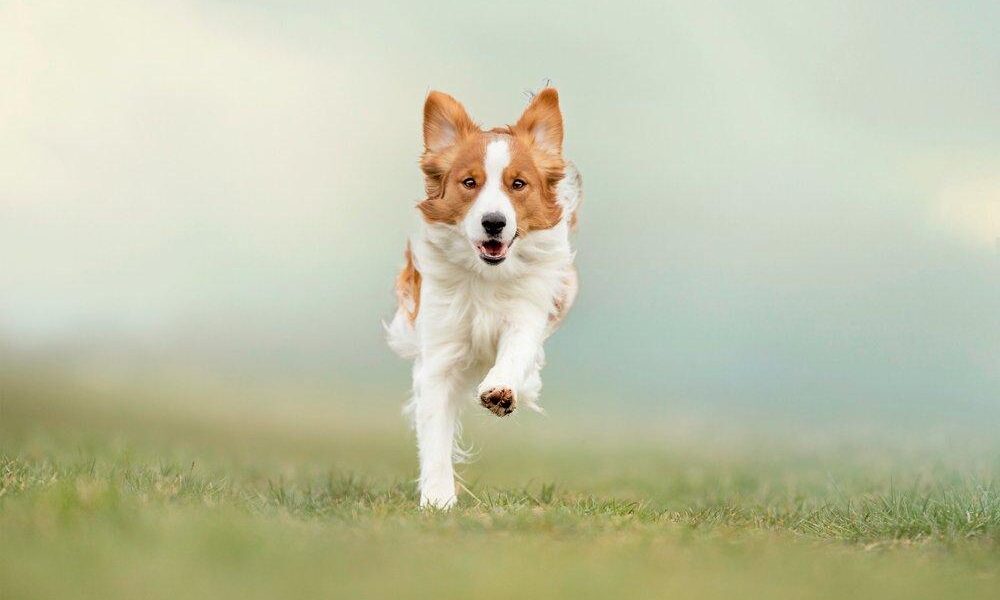Title: Mastering the Art of Dog Recall: A Journey to Unbreakable Bonds
Introduction:
In the heart of every dog owner lies a desire for connection, trust, and the joy of a well-calibrated partnership with their four-legged friends. Among the many skills that deepen this bond, dog recall stands out as a vital element in the dance of companionship. When you call your dog, it’s not just about obedience; it’s about creating a dialogue that transcends the mundane. Imagine the thrill of watching your dog bound toward you with unrestrained joy, the air filled with the promise of adventure as they heed your call. But achieving this level of response requires more than just a few training sessions—it’s a journey steeped in patience, understanding, and a sprinkle of creativity. In this article, we will explore the nuances of dog recall, uncovering effective techniques and enriching insights that can transform your calls into irresistible invitations, ensuring that “come” is not just a command, but a celebration of the bond you share.
Table of Contents
- Mastering the Art of Dog Recall Through Positive Reinforcement
- Understanding Common Challenges in Dog Recall Training
- Effective Techniques and Games to Enhance Your Dogs Responsiveness
- Building a Reliable Recall: Safety Tips and Best Practices
- Q&A
- In Conclusion
Mastering the Art of Dog Recall Through Positive Reinforcement
Teaching your dog to come when called is not just a matter of obedience; it’s about building a strong bond and ensuring their safety. Using positive reinforcement methods can make the process enjoyable for both you and your furry friend. Start by creating a rewarding environment. Here are some effective strategies to consider:
- Use high-value treats: Choose small treats that your dog loves and reserve them specifically for recall training.
- Practice in low-distraction areas: Begin training in your backyard or a quiet park. Gradually increase distractions as your dog improves.
- Make it a game: Use engaging activities such as hide-and-seek to encourage your dog to seek you out and come when called.
Moreover, consistency is key in achieving effective recall. Establish a clear cue that your dog can recognize as a signal to return to you. To help you track your progress, consider using a simple table to evaluate your dog’s response over time:
| Week | Success Rate (%) | Notes |
|---|---|---|
| 1 | 60 | Dog distracted by surroundings. |
| 2 | 75 | Improvement noted with treats. |
| 3 | 90 | Responds well to ‘Come’ command. |
Once your dog shows consistent improvements, celebrate their achievements with praise and playtime! This not only reinforces their learning but also strengthens your bond, ensuring that the recall command becomes a reliable part of your dog’s behavior repertoire.
Understanding Common Challenges in Dog Recall Training
Training a dog to come when called is a vital skill that fosters safety and strengthens the bond between pet and owner. However, several hurdles can hinder progress, making this task more challenging than it initially appears. One of the primary difficulties arises from a dog’s natural instincts. When a dog is distracted by enticing smells, other animals, or even curious sounds, their focus on the owner often diminishes. This can lead to a scenario where the dog ignores commands, which can be frustrating for the owner.
Another common challenge is inconsistent training methods. If family members do not use the same cues or rewards, dogs can become confused about what specific commands mean. Establishing a clear and consistent training routine is crucial. Moreover, environmental factors play a significant role, as busy parks or crowded areas may heighten a dog’s anxiety or excitement, reducing their likelihood to respond. To illustrate these challenges, the table below summarizes key elements that can influence recall training:
| Factors Affecting Recall | Impact on Training |
|---|---|
| Distractions (e.g., wildlife, other dogs) | Reduces focus on the owner |
| Inconsistent commands | Creates confusion for the dog |
| Environmental noise | Can increase anxiety |
| Positive reinforcement | Enhances learning and recall |
Effective Techniques and Games to Enhance Your Dogs Responsiveness
To enhance your dog’s responsiveness, consider incorporating fun and engaging techniques into your training routine. Games such as Hide and Seek can significantly improve recall. Simply hide somewhere in your house or yard and call your dog’s name. Reward them with praises or treats when they find you. This game not only stimulates their senses but also reinforces the idea that returning to you always leads to positive experiences. Another great option is to use a long leash during outdoor play sessions. This allows your dog to explore while still giving you control, making it easier to encourage them to return when called.
Additionally, various training commands can be combined with playful activities. Use treat toss as a method to promote recall; call your dog and immediately throw a treat the opposite direction. This will create a positive connection between coming to you and receiving rewards. To make this even more enjoyable, try incorporating a fetch with a twist; throw a ball and once your dog returns, ask them to sit before you continue playing. Consistently applying these strategies will drastically improve your dog’s responsiveness, making your outdoor adventures more enjoyable and less stressful.
Building a Reliable Recall: Safety Tips and Best Practices
Establishing a reliable recall involves consistent training and positive reinforcement, making it essential to create a supportive learning environment for your dog. One effective approach is to use a high-value treat that your furry friend loves, which will serve as motivation. Additionally, practice in various environments to help your dog generalize the command. Focus on short training sessions to keep your canine companion engaged, and always wrap things up on a positive note. Here are some key strategies to consider:
- Establish a clear recall cue: Use a specific word or sound that you consistently associate with coming back.
- Practice regularly in low-distraction settings: Gradually introduce distractions as your dog improves.
- Utilize a long lead: This allows your dog some freedom while still giving you control.
- Encourage play during recall: Make the return to you feel like part of an exciting game.
In addition to training techniques, implementing safety measures is crucial to enhance your dog’s recall reliability, especially during outdoor adventures. Always be mindful of your dog’s surroundings and potential hazards. Having a safety checklist can also be beneficial during outings. Consider the following elements:
| Safety Tip | Details |
|---|---|
| Leash and Collar | Use a sturdy leash and a well-fitted collar or harness. |
| Identifiable Tags | Ensure your dog’s tags are up to date with your contact information. |
| Emergency Whistle | Consider using a whistle for recall in noisy areas. |
| Safe Environment | Avoid practicing near roads or other dangerous areas. |
Q&A
Q&A: Mastering Dog Recall
Q1: What is dog recall, and why is it important?
A1: Dog recall refers to the ability of a dog to return to its owner when called, regardless of distractions. It is essential for safety in uncontrolled environments, enhances the bond between owner and pet, and allows for enjoyable outdoor activities without worry.
Q2: At what age can I start training my dog for recall?
A2: You can start teaching recall as early as a puppy’s first few weeks at home. However, the earlier you begin, the better! Young puppies are naturally curious and eager to please, making them more receptive to learning.
Q3: What are some effective techniques to teach my dog to come when called?
A3: Start in a quiet environment with minimal distractions. Use a cheerful tone and reward your dog with treats or praise when they respond to your call. Progress to varying locations and challenges as your dog begins to understand. Consistency and positive reinforcement are your best allies!
Q4: How can I handle distractions when practicing recall?
A4: Begin training in a controlled space and gradually introduce distractions. Use a long leash for safety while ensuring your dog learns to focus on you despite the tempting sights and sounds around them. Patience and gradual exposure can cultivate better recall in stimulating situations.
Q5: What if my dog ignores my call?
A5: If your dog often ignores you, consider the following: Are you using the right reward? Is your tone enticing? Ensuring the recall command is associated with positive experiences is vital. Avoid calling your dog for negative situations (like bath time) to prevent them from associating the call with something unpleasant.
Q6: Are there any specific commands or cues to use for recall?
A6: While “come” is the classic cue, feel free to get creative! Choose a sound or phrase that feels natural to you and your dog. The key is consistency; always use the same cue so your dog learns to associate it with the action of returning.
Q7: How can I maintain my dog’s recall skills over time?
A7: Regular practice is key! Incorporate recall exercises into your daily routine, combine them with fun games like hide-and-seek, or practice in new locations. Keep the training sessions brief and enjoyable to maintain your dog’s enthusiasm.
Q8: Can I train my dog for recall without using treats?
A8: Yes! While treats are an effective motivator, you can also use praise, playtime, or toys as rewards. Find what excites your dog the most and use that as leverage. The goal is to make returning to you the most rewarding experience possible.
Q9: What should I avoid when training for recall?
A9: Avoid repetitive calling; this can lead to your dog ignoring you out of boredom. Never punish your dog for failing to come, as this can create a negative association with the recall command. Always make the experience positive and encouraging.
Q10: Can I train a rescue dog for recall?
A10: Absolutely! Rescue dogs can learn recall skills just as effectively as puppies or any other dogs. It may take a bit more patience, especially if the dog has had previous negative experiences, but a consistent, compassionate approach will yield results.
Whether you have a sprightly pup or a seasoned rescue, mastering dog recall is a rewarding journey that strengthens your bond and ensures safety. Happy training!
In Conclusion
As we wrap up our exploration of dog recall, it’s clear that this essential skill is not just about obedience; it’s a testament to the bond between you and your canine companion. Mastering recall can enhance your dog’s safety, freedom, and overall enjoyment of life. Remember, each training session can be a pleasant adventure, fostering trust and communication. Whether you’re working with a playful puppy or a wise old friend, patience and consistency are your allies in this journey. So, step into the great outdoors, practice with enthusiasm, and watch as your dog returns to you with joy. After all, the joy of a solid recall isn’t just in the command—it’s in the newfound connection and shared experiences that await every time you call. Happy training!


